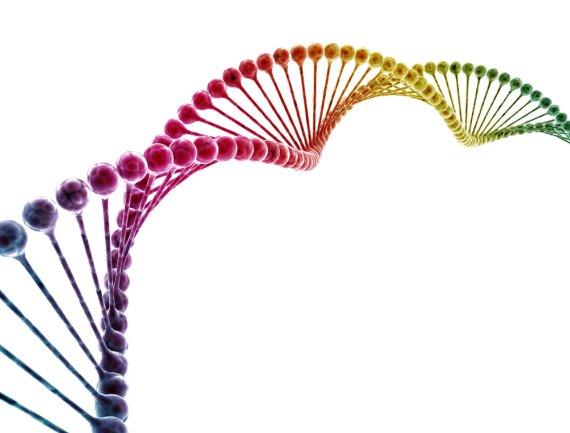(Foto: Shutterstock)
In nature, DNA is nicely coiled up in a double helix. However, scientists are now able to fold various structures using separate artificial DNA strands. This DNA origami is used in such fields as medicine, for example, where ‘boxes’ are folded to apply chemotherapy locally in order to diminish the side-effects, explains co-author Bauke Albada of the Organic Chemistry group. ‘These boxes have a lock that only opens when it binds to a cancer cell.’
According to Albada, however, the exact way the DNA origami is formed has been a black box for a long time. ‘Pieces of DNA are put together in a specific sequence, and the final product is filtered from the solution and studied under a microscope. This would show several well-formed boxes, a few half-finished boxes and perhaps a box without lid. But what went wrong is entirely unknown.’ Therefore, Albada and his team developed a new technique allowing them to observe the development of the DNA origami as it takes place. Their results were published last week in the journal Angewandte Chemie, which labelled the publication as a ‘hot paper’.
Mussel-adhesive
As DNA origami is too small to see using a normal microscope, the researchers use an atomic-force microscope, in which a tiny needle (probe) moves along the surface and registers each bump. By moving along the entire surface, a three-dimensional image of the molecule is created. Albada compares it to reading Braille. ‘As the probe is very sensitive to bumps, it is very important for the background to be as even as possible.’ The mineral mica is the ultimate flat material. But that is also its bigger disadvantage: mica is so smooth that virtually everything immediately slides off it. Luckily, nature is here to help. Mussels are masters at the sticking game and can adhere to the trickiest surfaces. Inspired by the mussel-adhesive, Albada and his colleagues developed a molecule that does adhere to mica, upon which they put an anchor that functions as a starting block for the other DNA pieces. An added advantage was that this anchor also adds to the adhesiveness of the molecule to the mica. Albada saw that the anchor makes a small dent in the mica when it comes into contact with it. ‘This provides the molecule with additional grip, comparable to making a small pit with an ice skate to prevent from sliding away.’
This is how the process works. The adhesive molecule creates a small dent and adheres to the mica substrate, creating an anchor from which further formation is possible. With thanks to: Bauke Albada.
Once the DNA is properly attached, the researchers can use the microscope to follow the following DNA pieces attaching on top. ‘As we can see exactly what is happening, we can also modify the process, by putting a different lid on the box, for example.’ The adhesive molecule is only 1 nanometre (a millionth of a millimetre) in thickness and, according to Albada, does not influence the measurements.
Albada has now been able to create a circular DNA structure. ‘This form is not usually seen in the final stages, as it disintegrates during the filtering process.’ In the future, he would like to apply this technique on functional structures, such as DNA tweezers. ‘These could be used to break down pathogenic proteins in the body, for example.’

